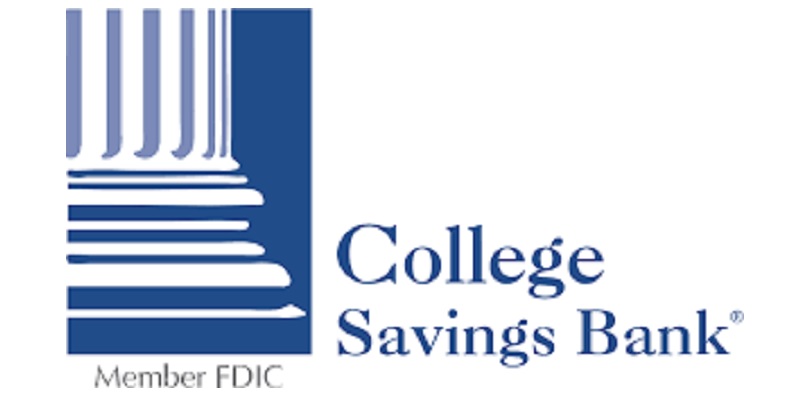In saving for a child’s education, parents want to know if they will have the funds necessary to pay the costs of college when the time comes. An dilemma they face is that, due to inflation, their objective is unknowable in advance.
Tuition Inflation
Many experts attribute the abrupt acceleration of tuition in the 1970’s to the passage by Congress of laws that funded new student aid programs in an effort to make college affordable for all. The U.S. Education Department (ED) was established to, among other things, administer applications for these student aid programs.
Before long, college administrators raised tuition knowing that under-resourced admittees could easily borrow from the ED to cover the spread. In fact, millions of admittees did exactly that. They borrowed from the ED to make up the difference between the resources they had and what they needed to pay a college’s costs.
Here’s the problem: The Consumer Price Index (CPI) average annual inflation rate was 3.7% from 1977 to 2025, yet tuition rose much more rapidly. Between 1977 and 2024, the average tuition inflation rate was 6.2% per year. The value of the education that could be bought for $20,000 in 1977 had risen to $318,000 in 2024. College tuition was 1,490% higher in 2025 than 1977, according to the College Tuition and Fees Price Index of the Bureau of Labor Statistics.
The rate of growth in tuition has long been an issue of national concern. It was difficult for most families to afford college in 1977, but it is far more difficult now. In an unstable economy like the current one, how can parents anticipate tuition needs many years hence?
CollegeSure As Protection Against Tuition Inflation
The CollegeSure Certificate of Deposit (CCD) is a type of 529 plan that helps parent cope with the dilemma described above. It was originated by the College Savings Bank, now a division of NexBank of Dallas. CCD’s may be purchased by parents in any state for a term of one to 22 years. A recent study of FDIC-insured 529 College Savings Plans, the CCD was ranked first based on Annual Percentage Yield (APY).
The CCD is not like a conventional CD in which funds are deposited for a set period of time and accrue interest. When mature, the principal plus interest is paid out and may be used for any purpose. The CCD is a specialized product that earns interest at a rate tied to the tuition inflation rate and distributions at maturity must be spent on educational expenses.
While other types of investments may provide greater returns, they run the risk of loss to principal. A CCD, like any insured CD, entails zero risk of loss of principal if less than $250,000. This appeals to parents who want to avoid forfeiting even a small part of what they have saved for college.
The CCD website describes the benefits of CCD’s as follows:
- FDIC-insured up to $250,000.
- No fees.
- May be in 529 Plans, Roth IRA’s, or Education Savings Accounts (ESA’s).
- Offered by College Savings Bank directly to U.S. residents without intermediaries.
- Contributions are state tax-deductible for residents of Montana, Arizona, Maine, Kansas, Pennsylvania and Missouri when held in 529 Plans, Roth IRA’s, or ESA’s.
- Guaranteed annual interest rate set at a minimum of 2%
- Maturities ranging from 3 to 22 years are available to match a family’s needs.
- CCD account holders can invite family and friends to contribute to the account.
- A range of recurring deposit options make CCD’s more affordable, as follows:
Table A
CCD Recurring Deposit Options
| Option | Minimum Deposit* |
| Mail-In | $250 Check |
| Payroll Deduction | $25 per pay period |
| Direct Deposit: From Bank | $25 per month |
| Rollovers | Permitted. Call: 1-800-888-2723 |
| eChecks: New Account Existing | $250 Online Gift |
The Independent College 500 Index
The interest rate paid on a CCD is not set by the market. It’s pegged to the Independent College 500 Index (Index), which is published annually by the College Board. The Index measures the change in tuition and other college costs incurred by full-time freshmen at five hundred four-year public and private colleges. The purchasing value of the money invested in a CCD increases in line with the cost of the colleges in the Index.
The CCD interest rate is adjusted each year on July 31. The APY over the term of each CCD is the Index’s average tuition inflation rate less a percentage issue margin assessed on the date of issue. The issue margin usually ranges from about 1.5% to 2.5%. The variable interest rate will be subject to a cap which is also determined on the date of issue. The interest rate is adjusted annually based on the change in the Index. In 2024-25, the Index’s average tuition increased by 2.5% for in-district students at public two-year colleges, by 2.7% for in-state students at public four-year colleges, and by 3.9% for students at private nonprofit four-year institutions.
Terms and Conditions of CCD’s
CCD’s are FDIC-insured for up to $250,000 and are top-rated by Standard & Poor’s. A CCD purchaser may withdraw accrued interest without penalty. However, a penalty will be incurred by the withdrawal of principal prior to maturity. The interest paid by a CCD is taxable in most states. The current interest rates are listed in Table B below:
Table B
The College Inflation Index CCD Interest Rates
| CD Term | Issue Margin | Interest Rate Cap | Year 1 APY | Maximum Interest Rate |
| Less than 3 years | 2.52% | 3.00% | 0.73% | 3.73% |
| 3 or 4 years | 1.94% | 3.00% | 1.31% | 4.31% |
| 5 years and over | 1.47% | 3.00% | 1.78% | 4.78% |
CCD’s are sold in whole or partial units. The current cost of a full unit is $37,200. At maturity, one whole unit will pay for one year of tuition at the average of colleges in the Index. If a partial unit is purchased, it will be worth that portion of the value of a full unit.
Since the interest rate is based on average tuition and costs, an individual college will require less or more than one CCD unit to cover one year of attendance. Based on recent data, 44% of one unit pays for the average public college at in-state rates and 128% of a unit pays for a top 50 national university.
If an account-holder cashes in the CCD before maturity, he or she will owe a penalty of 10% of the principal during the first three years of its term. The penalty drops to 5% for the remainder of the term except for the last year, when it drops to 1%. If the student-beneficiary does not go to college, the CCD will retain the principal and interest at the agreed-upon rate when it matures. It may then be used by the beneficiary for any purpose.
Drawbacks of CCD’s
While CCD’s can play a role in college savings, they’re not always the best investment because of their low return and lack of tax benefits. The following factors should be considered before opening a CCD account:
- Modest return. A CCD is a low-risk way to earn a return, so they typically offer lower percentage returns than other, riskier investments.
- Early withdrawal penalties:Accessing funds from the principal of a CCD before it reaches maturity incurs a penalty. However, the penalties on CCD’s that are held for at least three years are lower than the flat 10% penalty on regular CD’s
- No tax benefits:Unless they are part of a 529 Plan, Roth IRA, or ESA, CCD’s don’t offer tax-free growth or withdrawals even if the money is used for educational expenses. The interest earned is subject to Federal taxes as well as state taxes, except for account holders in Montana, Arizona, Maine, Kansas, Pennsylvania, and Missouri if held in 529 Plans, Roth IRA’s, or ESA’s.
- Locked interest rate:A CCD locks in the interest rate at the time of purchase for one year. This means that if interest rates rise substantially, an existing CCD won’t benefit from the higher returns.
- Issue Margin: The yield over the term of a CCD is affected by the issue margin assessed on the date of issue. This means that, although there are no fees associated with CCD’s, the interest rate margin charged at issue is pre-paid interest and functions like a fee.


Recent Comments